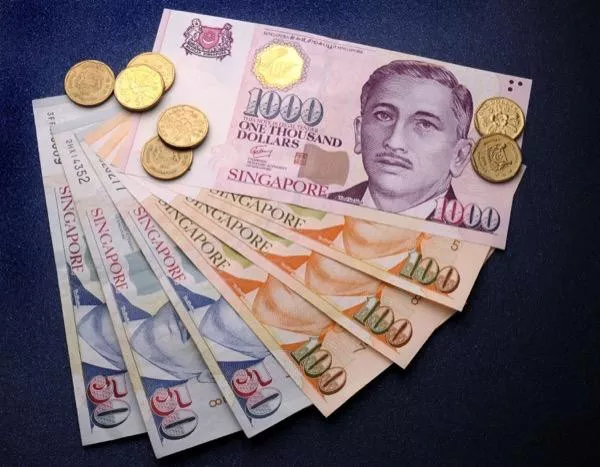Currency notes often carry historical, cultural, and economic significance, reflecting a country’s values and priorities. In the case of Singapore, a city-state renowned for its financial prowess and efficient banking system, the existence of a $500 note has been a subject of debate and curiosity. In this article, we will explore the presence, history, and reasons behind the elusive $500 note in Singapore, and whether it still exists in today’s increasingly cashless world.
Is There a $500 Note in Singapore?
Yes, there is indeed a $500 note in Singapore. The Monetary Authority of Singapore (MAS) issued a $500 note known as the Singapore Portrait Series $500 note. This note featured a portrait of Yusof Ishak, Singapore’s first president, on the front and the National Day parade on the reverse side. However, the circulation of the $500 note has been phased out gradually, and it is now rarely seen in everyday transactions.
The History of the $500 Note in Singapore
The $500 note in Singapore has a unique history that dates back to the colonial era and has evolved over the years:
Colonial Era: During the colonial period when Singapore was under British rule, various denominations of banknotes were issued, including a $500 note. These colonial notes were in circulation until Singapore gained independence in 1965.
Orchid Series: After gaining independence, Singapore introduced its currency, and the Orchid Series, launched in 1967, featured a $500 note. The Orchid Series $500 note was adorned with an illustration of a Singaporean orchid on the front and a vignette of the Singaporean Coat of Arms on the reverse side.
Portrait Series: In 1999, Singapore introduced a new Portrait Series of currency notes, including the $500 note with the image of Yusof Ishak, the first president of Singapore. This series was well-received for its modern design and advanced security features.
Reasons for the Existence of the $500 Note
The presence of a $500 note in Singapore served several purposes:
High-Value Transactions: High-denomination banknotes, such as the $500 note, are often used for significant financial transactions within the business and financial sectors, making them convenient for large-scale transfers or payments.
International Trade: Singapore is a global financial hub with a thriving trade sector. High-value banknotes are particularly useful in international trade and finance to facilitate cross-border transactions.
Wealthy Individuals: High-net-worth individuals often require large denomination banknotes for convenience and privacy in financial transactions.
Store of Value: Some people used the $500 note as a store of value, similar to an investment or savings vehicle.
The Phasing Out of the $500 Note
Over the years, the usage and circulation of the $500 note in Singapore have decreased significantly, prompting the authorities to take action:
Counterfeit Concerns: High-value banknotes are often the target of counterfeiters due to their potential for large gains. As counterfeit threats increased, the authorities saw a need to limit the circulation of these notes.
Money Laundering and Illicit Activities: High-denomination notes are often associated with money laundering and other illicit activities. The $500 note could facilitate such activities due to its anonymity and portability.
Promoting Cashless Transactions: Singapore has been actively promoting cashless transactions to enhance efficiency and reduce the reliance on physical currency. The prevalence of electronic payment options further reduced the need for high-denomination banknotes.
Removal of the $10,000 Note: In October 2014, Singapore ceased the issuance of the $10,000 note, a much higher denomination, due to concerns related to money laundering and other illicit activities. This move was part of a broader effort to address these issues.
Today’s Status of the $500 Note in Singapore
While the $500 note is still considered legal tender in Singapore, its use has become exceedingly rare. Most financial institutions and businesses do not readily accept or circulate this denomination due to the aforementioned concerns regarding counterfeiting, money laundering, and the government’s push for cashless transactions.
Moreover, there have been calls to discontinue the $500 note entirely. The Singaporean government has indicated its willingness to phase out high-denomination notes if there is a consensus among stakeholders, as well as a need for it, based on the evolving financial landscape.
For individuals who may still possess the $500 note, it can be exchanged for smaller denominations at banks or financial institutions. However, the exchange process may involve additional scrutiny and documentation as part of Singapore’s anti-money laundering efforts.
Conclusion
The $500 note in Singapore, while still in circulation, is a relic of a bygone era when high-value banknotes were more common and played a more prominent role in the economy. Today, its use has diminished considerably due to concerns over counterfeiting, money laundering, and the country’s push for cashless transactions. Whether the $500 note will continue to exist in the future depends on the evolving financial landscape and the priorities of the Singaporean government. As the world becomes increasingly digital, the fate of high-denomination banknotes, not just in Singapore but globally, remains uncertain.


